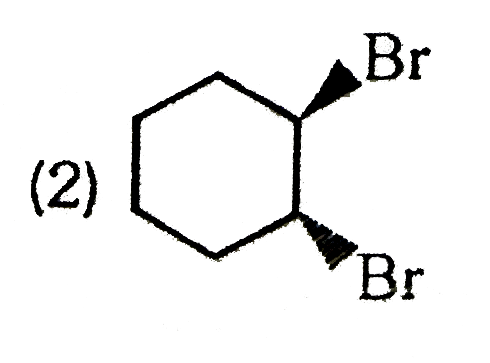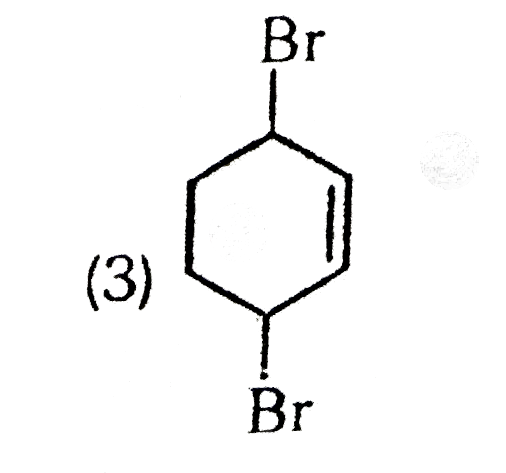Why does bromination of aniline, even under very mild conditions, gives 2,4,6-tribromoaniline instantanesouly?
To understand why bromination of aniline leads to the formation of 2,4,6-tribromoaniline even under mild conditions, we can break down the explanation into several steps:
Step 1: Understanding Aniline Structure
Aniline is an aromatic amine with the chemical formula C6H5NH2. The presence of the amino group (-NH2) attached to the benzene ring significantly influences the reactivity of the ring.
Hint: Recall that the amino group is a strong activating group for electrophilic aromatic substitution reactions.
Step 2: Activating Effect of the Amino Group
The amino group (-NH2) is an electron-donating group. It increases the electron density of the benzene ring through resonance. This makes the ring more reactive towards electrophiles, such as bromine (Br2).
Hint: Think about how resonance structures can stabilize the positive charge that forms during the electrophilic attack on the benzene ring.
Step 3: Electrophilic Aromatic Substitution
When bromine is introduced to aniline, the highly reactive bromine molecule acts as an electrophile. The increased electron density on the benzene ring due to the amino group facilitates the electrophilic aromatic substitution reaction.
Hint: Remember that in electrophilic aromatic substitution, the electrophile attacks the aromatic ring, leading to the formation of a sigma complex.
Step 4: Formation of 2,4,6-Tribromoaniline
Due to the strong activating nature of the amino group, bromination occurs at all three ortho (2, 4) and para (6) positions of the benzene ring. This results in the formation of 2,4,6-tribromoaniline almost instantaneously.
Hint: Consider how the positions of substitution are influenced by the electron density provided by the amino group.
Step 5: Mild Conditions
Even under mild conditions, the reaction proceeds rapidly because the amino group is so effective at activating the ring. This means that even a small amount of bromine can lead to complete bromination at all available positions.
Hint: Reflect on how temperature and concentration can affect the rate of chemical reactions, especially in the context of electrophilic aromatic substitution.
Final Conclusion
In summary, the bromination of aniline gives 2,4,6-tribromoaniline instantaneously due to the strong activating effect of the amino group, which increases the reactivity of the benzene ring towards electrophiles like bromine, even under mild conditions.
---
Aniline is an aromatic amine with the chemical formula C6H5NH2. The presence of the amino group (-NH2) attached to the benzene ring significantly influences the reactivity of the ring.
The amino group (-NH2) is an electron-donating group. It increases the electron density of the benzene ring through resonance. This makes the ring more reactive towards electrophiles, such as bromine (Br2).
When bromine is introduced to aniline, the highly reactive bromine molecule acts as an electrophile. The increased electron density on the benzene ring due to the amino group facilitates the electrophilic aromatic substitution reaction.
Due to the strong activating nature of the amino group, bromination occurs at all three ortho (2, 4) and para (6) positions of the benzene ring. This results in the formation of 2,4,6-tribromoaniline almost instantaneously.
Even under mild conditions, the reaction proceeds rapidly because the amino group is so effective at activating the ring. This means that even a small amount of bromine can lead to complete bromination at all available positions.
In summary, the bromination of aniline gives 2,4,6-tribromoaniline instantaneously due to the strong activating effect of the amino group, which increases the reactivity of the benzene ring towards electrophiles like bromine, even under mild conditions.
Topper's Solved these Questions
- ORGANIC COMPOUNDS CONTAINING NITROGENBOOK - PRADEEPCHAPTER - ORGANIC COMPOUNDS CONTAINING NITROGENEXERCISE - HIGHER ORDER THINKING SKILLS (HOTS PROBLEMS)
2 Videos
- ORGANIC COMPOUNDS CONTAINING NITROGENBOOK - PRADEEPCHAPTER - ORGANIC COMPOUNDS CONTAINING NITROGENEXERCISE - VALUE BASED QUESTIONS WITH ANSWERS
3 Videos
- ORGANIC COMPOUNDS CONTAINING NITROGENBOOK - PRADEEPCHAPTER - ORGANIC COMPOUNDS CONTAINING NITROGENEXERCISE - ADDITIONAL QUESTIONS (LONG ANSWER QUESTIONS)
7 Videos
- HALOALKANES AND HALOARENESBOOK - PRADEEPCHAPTER - HALOALKANES AND HALOARENESEXERCISE - IMPORTANT QUESTIONS FOR BOARD EXAMINATION
22 Videos
- P-BLOCK ELEMENTS BOOK - PRADEEPCHAPTER - P-BLOCK ELEMENTS EXERCISE - IMPORTANT QUESTIONS FOR BOARD EXAMINATION
25 Videos
Similar Questions
Knowledge Check
2,4,6-tibromo aniline is a product of
AElectrophilic addition on C6H5NH2BElectrophilic substitution on C6H5NH2CNucleophilic addition on C6H5NH2DNucleophilic substition on C6H5NH22,4,6 - tribromo aniline is a product of
Aelectrophilic addition on C6H5NH2Belectrophilic substitution C6H5NH2Cnucleophilic addition on C6H5NH2Dnucleophilic substitution on C6H5NH2Bromination of cyclohexene under conditions gives below yields:
 A
A B
B C
C D
D
Why p-nitroaniline is less basic then aniline
(b) Aniline dissolves in HCl.
(c ).Aniline undergoes bromination in orhto and para position but in presence of strong acid it gives m-bromo aniline.
(d) Why aniline does not undergo Friedel-Craft reaction?
View Solution2-Methylpropane on monochlorination under photochemical conditions give
View Solution2- Methyl propane on monochlorination under phtochemical condition give :
View Solution2-Methylpropane on monochlorination under photochemical condition give
View SolutionBromination of aniline gives 2,4,6 - tribromoaniline where as nitration of aniline gives m -nitroaniline . In case of nitration m -derivatives is fored
View Solution
